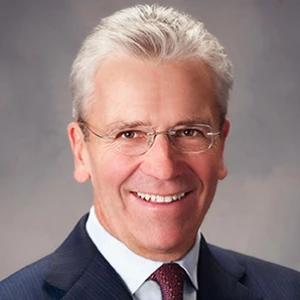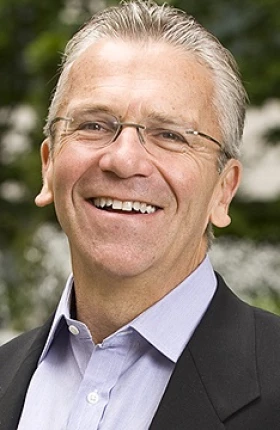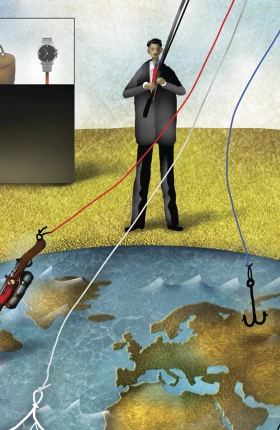This article is the fourth in a series based on Rocket: Eight Lessons to Secure Infinite Growth, which tells the stories of 16 business leaders who created iconic brands. The book, by Michael Silverstein, Dylan Bolden, Rune Jacobsen, and Rohan Sajdeh, is available now.
Consumers cannot think in abstractions. They cannot envision a new concept. They cannot predict their own behavior. They can only compare against their current frame of reference. So you need to make the big leap for them. You need to provide them with a reason to buy, a reason to brag to their friends. Expect new-to-the-world ideas to fall on deaf ears. Consumers will, however, change their tune when they can see, touch, and explore.
In our book, Rocket: Eight Lessons to Secure Infinite Growth, we tell the story of entrepreneurs who have courage and curiosity. We wanted to create an illustrated branding bible. We believe the stories and the eight lessons have applicability to both big and small companies.
We believe the starting point is to create a qualitative understanding—a map—of market drivers. You need to get into the heads of consumers and be able to tell their stories. It is both art and science. The purpose of the market map is to define dissatisfactions, hopes, dreams, and fears. Winning solutions respond to the distinct and specific needs of a group of consumers.
Learning from the Master
One entrepreneur we profile in Rocket is a personal hero. He is Leslie Wexner, CEO, chairman, and founder of L Brands, a $28 billion market cap company with two primary brands, Victoria’s Secret and Bath & Body Works. These two retail enterprises result largely from Wexner’s invention. They aim at a distinct and specific target consumer and they fulfill unmet needs and occasions.
Wexner bought Victoria’s Secret when it was a four-store chain and turned it into a global icon. Sales now top $7 billion and analysts see $20 billion in global potential. It is a dominant provider of lingerie to American women. It has expanded into fragrance, skin care, and a variety of related apparel categories. Its stores are now larger than 25,000 square feet. Its flagships deliver the highest sales per square foot and the highest profits in the specialty store business. Victoria’s Secret has continuously innovated and segmented in the provision of lingerie. It has created a unique supply chain for fast product launches and fast replenishment to “chase” trends.
At 78, Wexner remains at center stage in the major decisions of the business. He is a born “rocketeer”: a serial retail inventor and Renaissance man, equally comfortable in the worlds of art, architecture, history, and the shopping behaviors of women around the world.
How to Succeed: Understand the Market Landscape and Product Economics
Wexner’s invention model is classic: he creates for himself a clear representation of market structure, product economics, and competitive weaknesses. His original invention was The Limited, which ripped women’s sportswear as a category out of the sleepy department stores, where it hadn’t been well-defined. He put it front and center in a small-footprint store. It guided women to fashion, comfort, and security. On a concept board, it would have fallen on deaf ears. On a busy street or in a mall, it became a “must shop.” Wexner did it again with Express, aimed at younger women. Then he did it again with Limited Too for girls. He bought Abercrombie & Fitch when it was near bankruptcy and transformed it into a destination for clean-cut, preppy clothing at premium prices.
And then he found a way to take “sexy” mainstream with Victoria’s Secret. He knew that women have “every side of sexy” in their heads, and he delivered “playful, impulsive, fresh, optimistic, sparkling” under one roof. He took lingerie and laddered up into fragrance and body care with higher margins, higher velocity per square foot, and immediate international appeal.
In Wexner’s view, consumers react. They know what they love. But they can’t explain why. They know what they hate. But they can’t explain why. And they shift on a dime. For Wexner, success in business is about anticipation, instinct, insights—and, ultimately, curiosity and experience. He will, however, listen to tight summaries of in-depth consumer profiles and is always curious to understand what we call the “wheel of consumer emotions.” Consumers don’t neatly fit into any one segment. Their behavior and the way they purchase vary as a function of context. Where are they going? What are they doing? Whom are they doing it with? What conversations have they had? What media have they most recently seen or heard? What will drive their behavior at the moment when they are finalizing a purchase?
Wexner is insatiably curious. His curiosity and his experience have allowed him to give customers what they really, really want. He talks about “seeing around the corner” in anticipation of changes in shopping behavior and trends.
“Creators know how difficult it is to create a brand. They understand how fragile their brand’s equity is,” he says. “We know that the force of gravity is likely to bring you down. We know that success breeds competition. And the most loyal consumer is loyal for about 32 seconds. You can’t and shouldn’t count on them for their loyalty. You need to win them back with reinvention. Everything changes. So if you don’t exercise the change muscle, then you just lose the ability to change. You either go out of business or you evolve into a different position.”
Wexner believes in the power of big brands to capture consumers’ imagination and to influence the way they spend their money. He knows from experience that leadership requires continuous evolution, continuous investment. What’s hot today is cold tomorrow. He has studied and lived the history of consumer shopping and consumption. He knows that where there is success, imitators follow. He believes that where there are retailers earning price premiums, there are discounters coming. He says that to earn above-average returns, you need to bring innovation, news, and depth to a category.
Wexner operates nearly 3,000 stores in the U.S., Canada, and the UK and has 1,000 franchised stores in other markets. More than half his company’s profits are made in November, December, and January. Foreign stores are among the highest grossing in the company. Typically, they have a very small footprint but extraordinary
velocity. The Victoria’s Secret store on London’s Bond Street has sales of $80 million per year. Dubai’s is the third-largest store in the world. A small store in Chengdu, China, has sales of $14 million per year. His international expansion has been patient and careful. He generally finds a trusted local company and partners with it, tightly controlling the brand, merchandising, and operational training.
Wexner made sexy lingerie mainstream without offending anyone. He gave consumers what they really want. They want a sexy self-image and confidence.
Let Your Curiosity Rule—and Then Reinvent
Wexner says his greatest advantage in life is his natural curiosity. His story is a profile in curiosity—how a constant search for patterns and understanding from the point of view of a merchant can be a path to riches, fame, and joy. It is also a story about reinvention—from one category to another, transporting business skills and insights and investing for advantage.
We also believe that curiosity is the greatest source of ideas, retail revolutions, and insights. A curious mind armed with skill, experience, knowledge, and patterns can give birth to a big brand revolution. A curious mind does not say to consumers, “What do you want?” A curious mind understands context, understands behavior, understands spending and spending patterns—the accumulation of a day’s purchases, or spending over a week or a year. A curious mind asks the questions that open up the consumer to talk about her latent dissatisfactions, hopes, wishes, and dreams. A curious mind knows that functional goods sold en masse earn a good return, but breakthrough profits come from satisfying emotional needs. A curious mind does not jump to conclusions but tests carefully and thoroughly. A curious mind will draw on all of life’s experience to get to the big “Aha!” The curious cut the data by quintile, by segment, and by user.
Wexner used his curiosity to reinvent the women’s underwear market. He is the leading proponent of reinvent or die. He taught us that when a brand is on top, it has the most to lose and needs to be investing fiercely. Together, Wexner and BCG defined who is the “best at” in a category—first for Wexner’s businesses and then for many other consumer products and retail concepts. The “best at” is the dominant supplier—the one that provides great depth, assortment, and variety and that also leads the category with news.
“The people that ran the stagecoaches didn’t invent the railroads and the guys that ran the railroads didn’t invent the steamship lines, and the steamship lines and the railroad guys didn’t invent the airlines. Businesses have to be reinvented or they become obsolete by their successor,” he says. “So in retail, the department stores didn’t invent the discount stores and they didn’t invent the specialty store. They are being obsoleted by both of them.”
Wexner’s success with lingerie enabled him to extend into adjacent categories—sleepwear, swimwear, yoga and exercise clothes—and, with PINK, into the younger generation of consumers. It opened the door for the large prestige-fragrance business.
The Apostle Interview: A Victoria’s Secret Fanatic
We met a Victoria’s Secret customer in her home in the Crown Heights neighborhood of Brooklyn, New York. Jenny Kim is 27 years old and was educated at the University of Chicago and the Kennedy School of Government at Harvard. She makes $70,000 a year working for a not-for-profit organization. She is 5 feet 7 inches tall and wears her dark hair medium length. She was born in South Korea but moved to the U.S. as a child and is accent free. She wears wire-rim glasses and is proud that she is athletic—she runs, bikes, hikes. Jenny is a Victoria’s Secret apostle. She swears by the brand: “I like the style. I want my underwear colorful and fun. I like to go to VS because it’s new and exciting. I like the displays.”
She says that the occasion is a key deciding factor when she is choosing what to wear. “Some underwear I would classify as ‘fun and cute’ and that I’d just wear around the house,” she says. “Then there’s some that I wear when I go on a date. For date nights, I like the lacier stuff. I can always feel confident with what I’m wearing. I could always show somebody my underwear.”
“When girls talk about underwear or bras, I mention that VS is the only thing I purchase and it’s really great,” says Jenny. She visits Victoria’s Secret once a month. She spends about $500 a year at the store. Some 75% of her bras and panties are from Victoria’s Secret. She rotates her underwear and tries to maintain an inventory of 30 sets for work, for going out on weekdays, for exercise, and for weekends. She loves having a rainbow of colors in her underwear drawer.
Jenny says Victoria’s Secret makes her feel sexy, glamorous, and comfortable. The way she connects with the brand is distinctly different from the way women connected with the brand when we conducted interviews a decade ago. Six-sevenths of the lingerie in Jenny’s drawer is Victoria’s Secret’s. The one-seventh that Victoria’s Secret does not account for is due to normal consumer promiscuity. Jenny will try other brands as a way to validate her loyalty.
Understanding the Path to Having Not Just Customers, but Apostles
Wexner recreated Victoria’s Secret for consumers like Jenny. He figured out how to get these consumers to visit the stores almost every month and to shop there not just for lingerie but also for sports bras, fragrance, skin care, swimwear, and other accessories. He sells to the Jennys through the Omni channel—they can buy 24/7 and learn about the fashion models, the new products, and the “technology” of bras. He has Jenny’s loyalty now, and his superior depth of assortment locks her in. The annual televised Victoria’s Secret fashion show and extensive PR have made the brand an international property.
By continuously refreshing his brands, Wexner has given them the fountain of youth—they are forever young, forever current, and forever shoppable. Curiosity and courage are, of course, the prerequisites.
Some Key Action Points
You can apply these lessons immediately by making sure you take the following steps:
- Completely understand your customers by seeking an intense, complete, and empathetic view of their lives and the context for their purchases.
- Respond to your customers’ dissatisfactions with precision and power.
- Define a winning proposition that is consumer right and delivers margin accretion.
- Take an expansive view of the consumer’s needs and expand beyond your current boundaries.
- Deliver infinite growth by having your customers talk about you, exclaim about you, and tell their friends and colleagues about you.
Exercise your creativity. Ask yourself these questions: Where is the profit core? How can I build a business based on this core idea? How do I fill it out completely so I own every segment? How do I take my core users and satisfy their every demand? How do I drive an organization with the simple phrase, “What are we best at?”
Own one idea. Complete it. Map the current model of purchase and usage. Change how it is done so at least some part of the market uses only your product. Extend from that core user to a much broader universe. Describe your concept in a very short six-word story—à la Ernest Hemingway: “For sale: baby shoes, never worn.”






